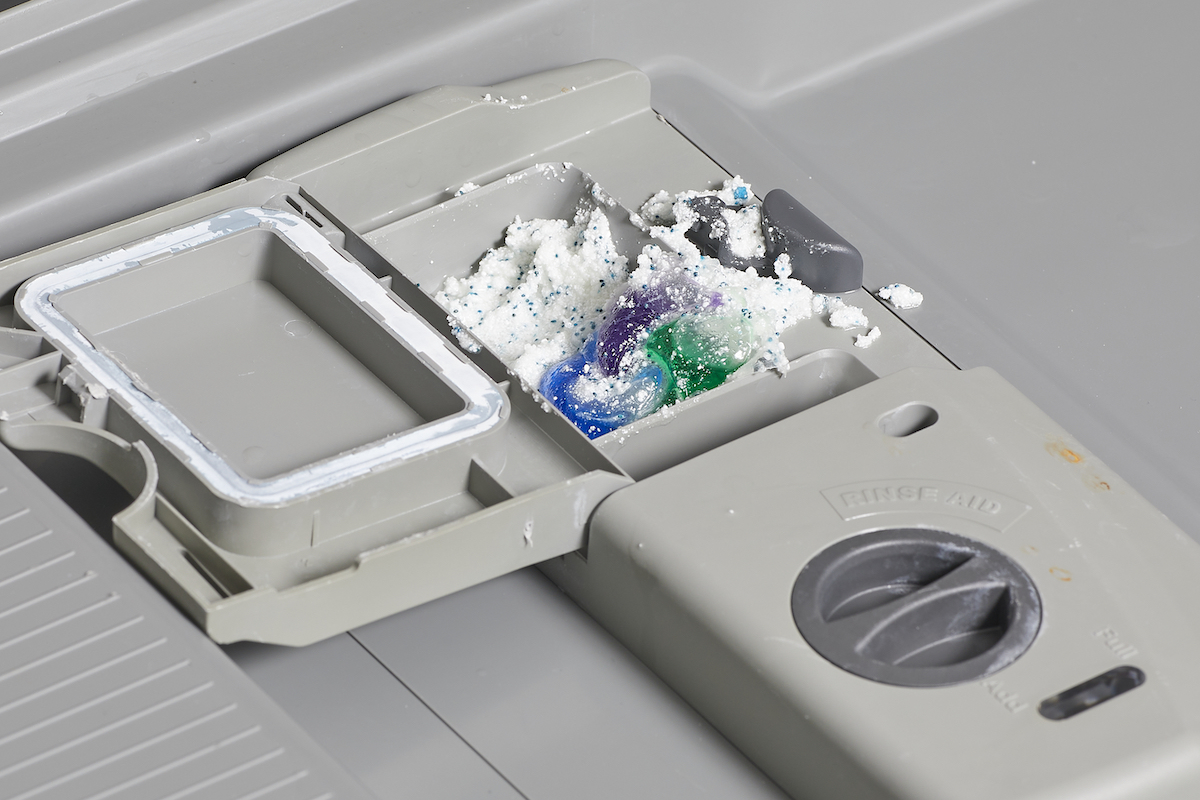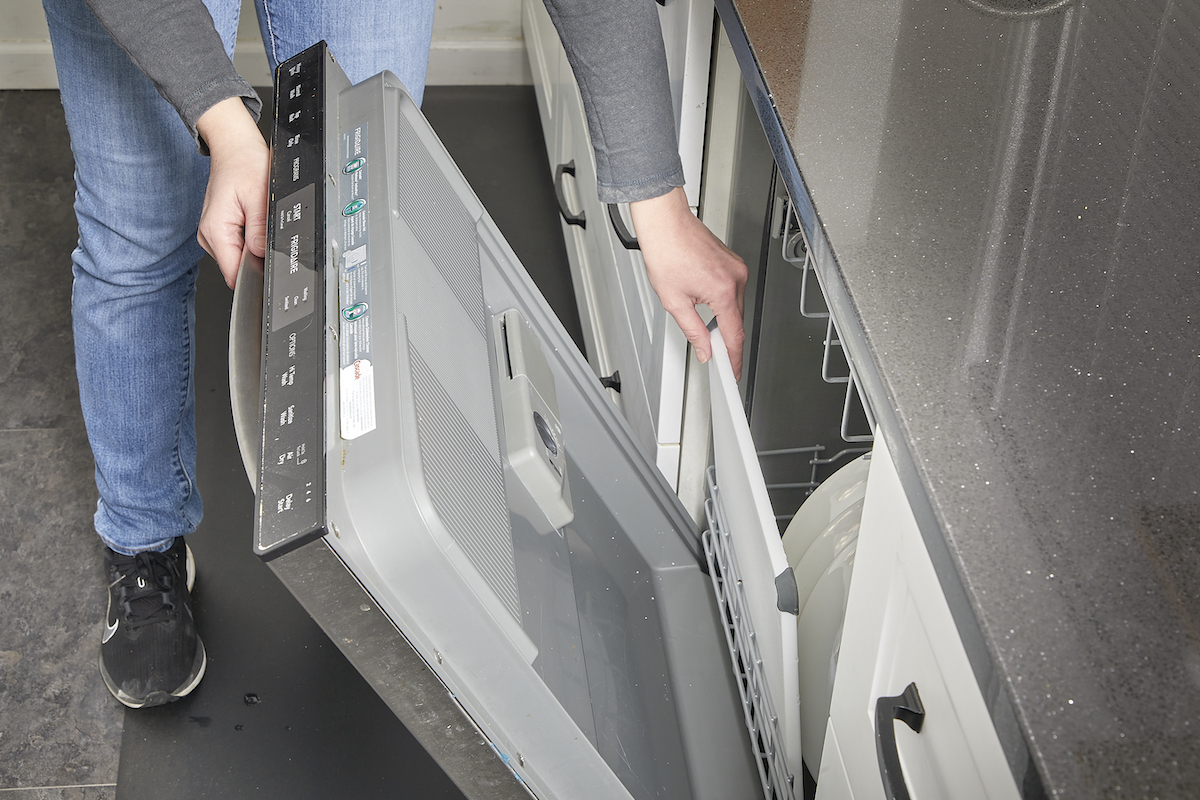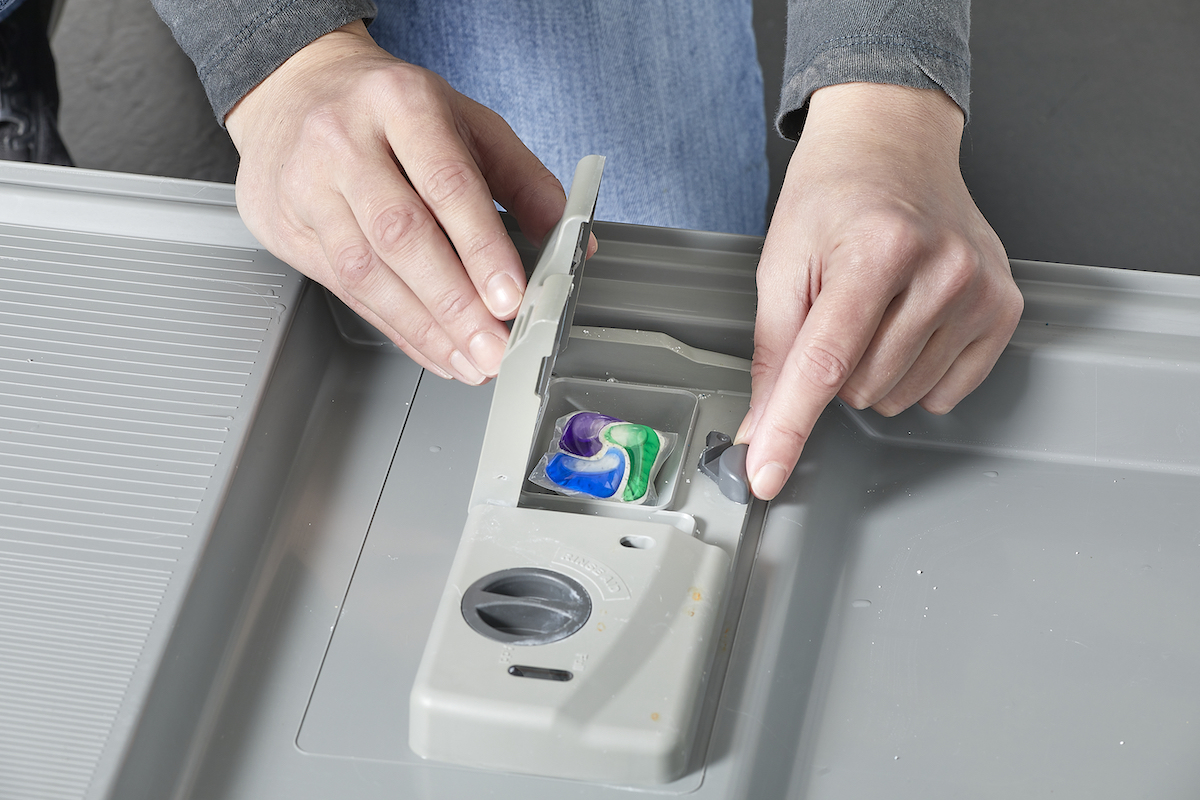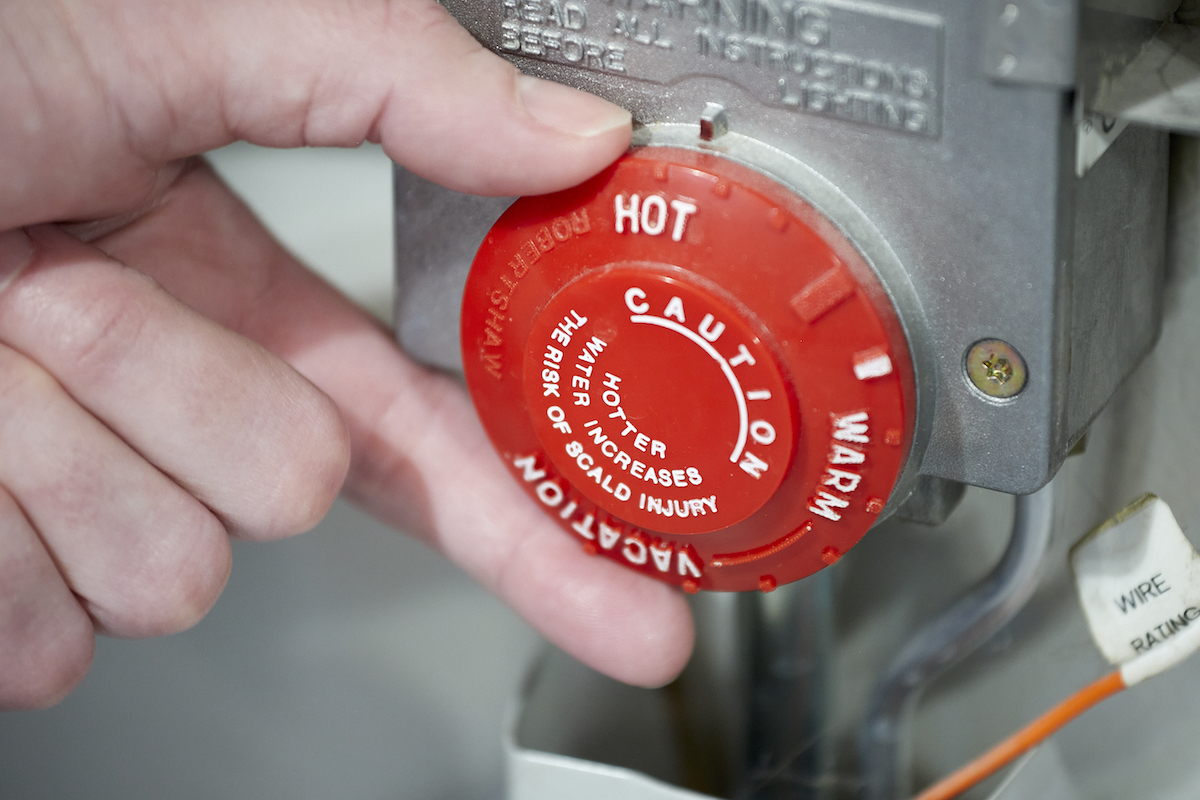

We may earn revenue from the products available on this page and participate in affiliate programs. Learn More ›
Q: We recently switched to dishwasher pods instead of using liquid detergent. However, I’ve noticed that they’re not fully dissolving. Am I doing something wrong? Will I need to switch back to liquid detergent? Why are my dishwasher pods not dissolving?
A: Dishwasher pods are designed to help simplify the task of washing a load of dishes. Instead of having to pour out and measure dish soap, you can simply drop a pod in the soap compartment, start the machine, and get on with your day. The plastic on them is designed to dissolve, leaving no visible trace inside the appliance. However, when your dishwasher pods are not dissolving, they have the opposite effect, leaving you frustrated each time you open up the dishwasher. There are several potential causes for undissolved pods, which we’ll explore in greater detail below. These include:
- Blocked dispenser door
- Low water temperature
- Clogged or faulty water inlet valve
- Clogged or broken spray arm
- Failing circulation pump
Undissolved pods leave you with questions about whether your dishes are fully cleaned. The pieces of plastic that are left behind can also result in a clogged dishwasher or cause residue to build up inside the appliance. Read on to learn more about what can prevent these pods from dissolving and what you should do about it.
A blocked dispenser door is a common cause of undissolved dishwasher pods.

While you might be worrying about the need to repair or replace your dishwasher, there is often an easy fix for the problem of dishwasher pods that are not dissolving properly. According to Karina Toner of Spekless, a home cleaning company serving the Washington, D.C. area, “Dishes can obstruct the pod dispenser. It’s essential to load dishes in a way that doesn’t block the pod’s path to the water stream. Users should ensure there’s enough space around the dispenser for it to open properly.”
A faulty dispenser could also be the culprit.

If you’ve confirmed that the dispenser door isn’t blocked by any tall dishes, and it still doesn’t open, then you’ll want to examine it further to determine if the dispenser itself is the reason the dishwasher pod is stuck in the dispenser:
- Check the dispenser for cracks or visible damage.
- Verify that the dispenser door pin is not bent or damaged. If it does not appear to be moving correctly, it will need to be replaced before the door will function as designed.
- Check the latch to see if it is working properly. If damaged, you’ll need to purchase a new latch for your model.
- Ensure that the dispenser door spring isn’t bent or otherwise misshapen. Replace it if any damage is identified.
- Locate the lever and look for any signs of damage. Replace if needed.
Other potential problems with the dispenser will likely require the services of a professional to diagnose and repair. The expert might:
- Use a multimeter to check the bi-metal actuator (the metal latch that releases the door when activated). If the multimeter registers no continuity, then this component will need to be replaced.
- Look for any signs of damage to the dispenser actuator, and replace it if any damage is noted.
Low water temperature is another typical culprit.

If your dishwasher tablet is not dissolving, the water inside the appliance may not be hot enough. “Dishwasher pods are designed to dissolve at specific temperature ranges,” Toner explains. “Users should check their water heater settings and ensure the water is heated to the recommended temperature,” she adds, or you may encounter the problem of the dishwasher not dissolving soap. The accepted temperature range for dishwater water is between 120 and 160 degrees Fahrenheit.
To verify that the water is heating properly, wait until the middle of a cycle and check the internal thermostats. If your model does not have an internal thermostat, then you can use an external thermometer to check the temperature of the water in the appliance during a cycle. The most common culprit for cold water during a wash cycle is a faulty heating element, which will require a professional repair or possible replacement.
A clogged or faulty water inlet valve can stop the flow of water in a dishwasher altogether.

When there is soap still in the dishwasher after a cycle, it can be a sign that there is a problem with the water inlet valve. If the valve fails, it can prevent the appropriate amount of water from entering the appliance during a cleaning cycle. Without enough water, the pod will not be able to dissolve properly, and your dishes won’t get fully cleaned.
You can run an at-home diagnostic test to see if the water valve is to blame. After starting your dishwasher on a normal cycle, let it run for two minutes before opening the door. Measure the depth of the water in the tub. If your dishwasher has a metal or porcelain tub, there should be at least ½ inch of water in the base. For models with a plastic tub, there should be a minimum of ⅜ inch of water in the base. If there is less water in your dishwasher, that is a sign that the inlet valve is clogged or faulty and that it will need to be replaced.
Sometimes, hard water may be to blame for a clogged water inlet valve. If you suspect this to be the cause of your problem, you might want to consider switching to one of the best dishwasher detergents for hard water to prevent the valve from getting clogged again.
If you rule out all the above, check the dishwasher spray arms and circulation pump.

Problems with the spray arms can also result in dishwasher soap not dissolving. These arms, which can be in different positions depending on the specific model, are designed with little holes that spray water to help clean the dishes. Over time, debris can clog these holes, preventing water from exiting properly. You should be able to remove the arms and gently scrub them using soap and warm water to release residue. A paper clip or brush can also help to unclog any blockages.
Yet another possible explanation for undissolved pods is a defective circulation pump. If the circulation pump isn’t working, water won’t move through the appliance as intended, preventing the pods from dissolving. This dishwasher repair cost may not be cheap, but it is something that is best left to the professional.
Final Thoughts
It can be frustrating when your dishwasher is not dissolving soap. The possible causes outlined above should help you easily identify and remedy the problem. While you’re working to determine the cause of the undissolved pods, resist the urge to toss them in the bottom of the dishwasher.
While the pods may dissolve more fully, the detergent is going to be released into the cycle earlier than it should be. This can cause much of it to get washed away during the pre-wash, and might mean that your dishes are not cleaned as thoroughly as they should be during the full wash cycle.
